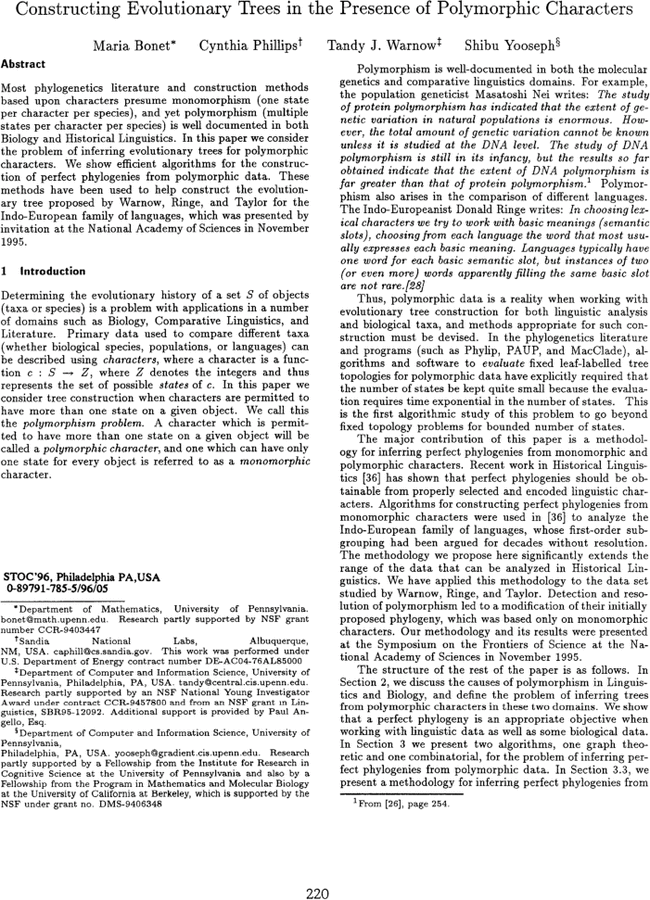Cited By
View all- Fomin FVillanger Y(2012)Subexponential parameterized algorithm for minimum fill-inProceedings of the twenty-third annual ACM-SIAM symposium on Discrete algorithms10.5555/2095116.2095254(1737-1746)Online publication date: 17-Jan-2012
- Cryan MGoldberg LPhillips C(2005)Approximation algorithms for the fixed-topology phylogenetic number problemCombinatorial Pattern Matching10.1007/3-540-63220-4_56(130-149)Online publication date: 8-Jun-2005
- Bonet MSteel MWarnow TYooseph S(1998)Better methods for solving parsimony and compatibilityProceedings of the second annual international conference on Computational molecular biology10.1145/279069.279081(40-49)Online publication date: 1-Mar-1998


